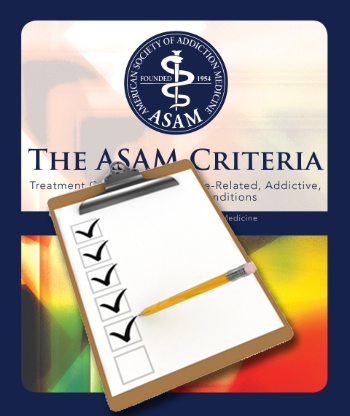An ASAM Perspective
I’m a fan of ASAM criteria, because they helped put an end to a disturbing early trend of requiring the client to ‘fail’ in outpatient prior to accessing higher levels of care. Still, I’ve learned that thinking about a placement decision in six dimensions is foreign to many clinicians.
Understanding the ASAM dimensions, and how they influence decisions by the folks who authorize or pay for substance abuse treatment, is more important than ever for addiction counselors. The principle behind most ASAM-based systems is to treat clients at the least restrictive level at which they can benefit—which is why most public-funded or private insurance-based treatment systems begin with the “default” presumption of a simple outpatient program (OP.)
Simple outpatient usually constitutes one or two hours of treatment, once or perhaps twice a week. In ASAM terms, an outpatient is someone with a DSM-diagnosable substance use disorder who also:
- Does not need a higher level of care for detox, a medical or health concern, or various co-occurring emotional/ psychiatric issues
- Does have some motivation for treatment, even if still quite ambivalent
- Can remain abstinent, or largely so, during the treatment episode, and
- Does have enough structure and support in the recovery environment to succeed as an outpatient.
By comparison, a client needing Intensive Outpatient (IOP) is generally somebody who requires additional structure and support from treatment, in the form of perhaps 3 sessions weekly of 3 hours per session. Can be more.
The barriers that necessitate a higher level of care are usually in the last 3 ASAM dimensions: motivation or readiness; potential for relapse or continued use; and recovery environment. Often, that translates to a client strongly resistant to the idea of treatment, unlikely to remain abstinent, or burdened with a ‘recovery-unfriendly’ situation. An example:
Bernardo is 28, a polysubstance user since age 14, with 3 previous treatments, after which he quickly relapsed. His family threatened eviction if he kept using drugs. Current drugs of choice are cocaine and Oxycontin. His mother insists on treatment, but has done so in the past and then reneged. He has a relationship with a younger woman, 19, also a drug user who is currently in OP elsewhere. Bernardo reports strong cravings and a history of poor impulse control.
Bernardo needs IOP because of his demonstrated pattern of relapse, current craving, and his various enabling relationships. He’d probably fail in weekly outpatient but might well succeed in a more intensive outpatient environment. At least his chances are better.
Being able to use factual information and observations from a client’s assessment or progress notes, and explain it clearly in the terms of the six ASAM dimensions can make the difference in getting authorization for a higher level of care.
See also:













